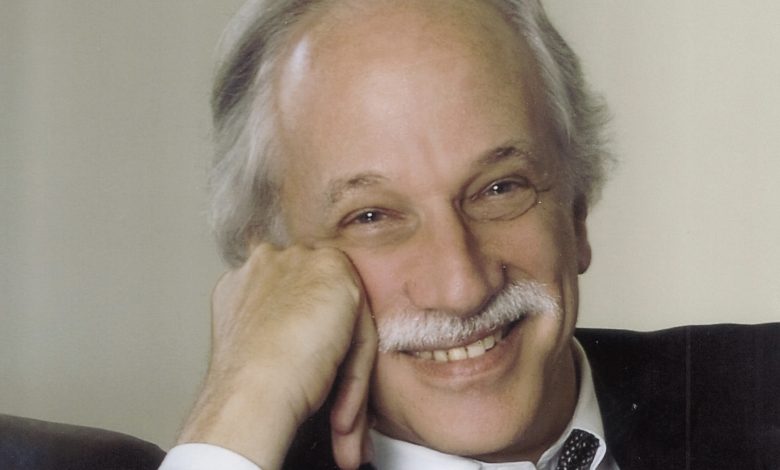Alumni Spotlight: John Nannes

One of the most renowned alumni of the University of Michigan Law School, a man who remains connected to the school and offers his support to its students, is Mr. John Nannes (’73). Nannes, the financial backer behind the Nannes 3L Challenge, still looks back at his time at the University of Michigan Law School as some of the best years of his life and deems it only appropriate to give back to the Law School and its students in a meaningful way.
“I was a rather enthusiastic student — enthusiasm bordering on nerdiness at times,” Nannes recalled. “I think I missed one class in three years of Law School … I enjoyed the courses. I enjoyed the professors.. I enjoyed the students. [My experiences at Michigan] launched me for clerkships, which led to the Justice Department’s Antitrust Division, which led to Skadden. So, I owe an awful lot to the Law School, which is why I think I’ve spent so much time trying to support it.”
After his time at the Law School, Nannes went on to begin a successful career. “I spent the summer between second and third year in Washington, D.C., working for a law firm,” he said. “While I was there, I applied for and got a clerkship and then another one, by which time I had settled into Washington.”
Following that, Nannes wasn’t entirely sure what he wanted to do in the long-term but had an interest in antitrust. “I was very lucky because my antitrust professor at Michigan — Tom Kauper — was running the Justice Department’s Antitrust Division in Washington at the time when I was looking for a job. And so Tom brought me in as his special assistant, and that kind of solidified my interest in antitrust.”
After Kauper returned to teaching, Nannes also made a career switch. “I went and joined a law firm, which very few people had heard of, at the time. It was a small New York firm, and it had no real antitrust practice to speak of, but something about it intrigued me. So I wound up going there and being the first associate in the Washington office of Skadden, Arps.” Nannes continued working for Skadden until 1998, when he returned to the Antitrust Division during the Clinton Administration, this time as a senior official. He returned to Skadden in 2001 and remained there until he retired in 2020.
Throughout this time, Nannes supported the Law School in various ways. He chaired the Law School’s recent $200 million campaign, served on Dean Caminker’s and Dean West’s Advisory Committee, and taught antitrust at the Law School commuting weekly between Washington and Ann Arbor. Nowadays, to most Michigan Law students, Nannes is most well-known, and beloved, for the Nannes 3L Challenge. Per the terms of the challenge, 3Ls have the opportunity to sign up for the challenge and, by doing so, Nannes will make an immediate contribution of $250 to the student organization of each 3L’s choice. In exchange, the student commits to make a contribution to the Law School in each of the first four years after they graduate (in whatever amount the student feels comfortable donating).
“I don’t remember the exact starting point [of the Challenge],” Nannes admitted. “I know at some point in the early 1990s, I was on some Law School committee that was looking into Law School finances. We knew that there were three sources of funding for the Law School — the state of Michigan, tuition, and alumni giving. But there were some trends that weren’t favorable to Law School: The major one was that state funding for the Law School had declined substantially.”
With that decrease in state funding came pressure to increase tuition. And, along with that came increases in student debt.
“Tuition was going up, and students were incurring substantial debt. And the percentage of students who were giving back to the Law School in the form of contributions after graduation was on a downward trajectory … We were concerned about the increasing burden on students. So that kind of left alumni giving as the one area with “expand the pie” potential, taking some of the financial pressure off students. Then the question became how to do that.”
Enter the Nannes 3L Challenge in 1995.
“The notion was that we needed to show students how they benefited from alumni giving while they were in Law School, in the hope that when they graduated they would want to support the Law School financially for future students. So here’s what I came up with: I would promise any 3L student who signed up for the Challenge that the student could designate $250 of money I would give to the Law School, to any student organization that the student chose. So it wouldn’t be me directing the money, but it was empowering students to designate the money to the cause that was most attractive to them at school. And so that will kind of show them early on that alumni support can have a beneficial impact on day-to-day activity at the Law School.”
But, as Nannes said, “there’s a quid to the quo.”
“I asked the students if they would, as a condition of accepting the $250, agree to make a contribution back to the Law School, in each of the first four years after they graduated — in whatever amount they were comfortable donating.”
Nannes explained that the amount of the students’ donations wasn’t as important as the fact that they were donating. “We weren’t trying to make this something that only students going to BigLaw could afford to do. So there was no required minimum, though we hoped the graduates would give as generously as their circumstances permitted.”
The biggest issue that existed with the challenge, in Nannes’ opinion, was that there were some difficulties in ensuring that the students actually followed through on their end of the bargain. “The program was working in certain respects, because students were signing up, but it wasn’t working in other respects because some students who signed up weren’t giving back after they graduated. So we weren’t sure if the program was really working.”
And that’s when inspiration struck once more: There was another thing they could do to incentivize students’ follow-through. “Somebody on the development staff — I know it wasn’t me — came up with the idea of allowing students to actually run the program,” Nannes offered. “Because up until then, development staff had been soliciting students to sign up, staffing the signup tables, and sending out reminders. But the notion was if the students controlled the program, owned it, that they would have more credibility with their colleagues than the development staff — or some old person like me.”
And the 3LChallenge has run like that ever since 2007. “We formed, each year, a 3L student committee — they develop the themes, and they solicit the students to sign up and follow through with them after graduation. I think we had a couple years — a couple years before COVID hit — I think we hit something like 70% of the 3L class was signing up for the 3L Challenge. And this year, we will hit something of a milestone: More than 5,000 3Ls will have taken the Challenge since 1995.”
“We’re still at the point where not 100% of the students who sign up give back. So there are efforts to close that loop … The whole hope here is that by getting students in the custom of giving back to the Law School in the years immediately after graduation, in whatever amount they comfortably can, that they’ll get in the habit of giving and continue to donate down the road … It’ll have enormous benefits for the Law School, and allow the school to fund things like public interest fellowships, student organizations, guest speakers, programs, etc., to a much greater degree, and help ensure that the Law School will be as vibrant going forward as it has been to those of us who enjoyed it in the past.”
The Law School is a special place, housing a special community. In that way, it’s no wonder at all that students are eager to participate in the Challenge — and give back to the school. The Challenge serves as a reminder and a motivation to students to respect and appreciate the opportunities that the Law School offers.
“I hope we’ve triggered that instinct that causes students to be grateful for the education that they’ve received and that they realize that the quality of the education they have received is in part due to the generosity of alumni who came before them. So there’s some notion of payback and some notion of gratefulness for the education they got or the friends that they made — or maybe just a combination of those.”
But for Nannes, there have been some unanticipated benefits. “In some years, I’d come out to Ann Arbor, and we’d invite the student committee to lunch. And we’d sit around a table, and I would just ask them, ‘tell me what affinity groups are of greatest interest to you?’ And they’d go around the table, and there was enormous diversity — Women’s Law Students, Muslim Law Students, BLSA students, Jewish Law Students, Student Funded Fellowship advocates, Native American Students, Federalist Society students, America Constitution Society students, etc. All sitting around and having a perfectly congenial conversation about the Law School and about their experiences, which demonstrated to me that the notion that Michigan Law is a collegial institution was true. And I was finding that the students on the committee were making new friends, based on their work on the 3L Challenge. I actually heard that student committee members often maintained relationships with one another after they’ve graduated. That was a wholly unanticipated development, an additional benefit that came from their association with the program. So that was a nice surprise.”
The Law School has a lot to thank Nannes for. Not just in the sense that he financially contributes a significant amount of money to our student orgs — but also because he encourages students to remain connected to the school after graduation. Oftentimes, people take for granted the education that they have received, and by remaining tied to the Law School via the Challenge’s stipulations, young alums are provided an opportunity to remember and appreciate what the Law School offered them. And in doing so, it creates a cycle — Nannes helps students who go on to graduate and continue to help the next generation of students. We remain the students in a long line of generous alums, and thanks to Nannes’ donations, we are able to take advantage of opportunities as students — and continue offering those same opportunities to future students.
Editor’s Note: The Nannes 3L Challenge will be taking place in early October this year — if you’re a 3L interested in giving back to the Law School community, consider signing up, and know that Mr. Nannes is very proud of you.



